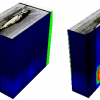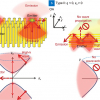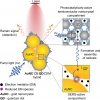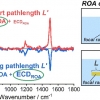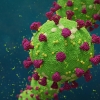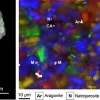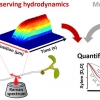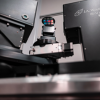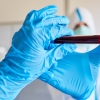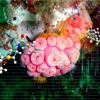Spectroscopy News
Pages
A deep neural network has been developed to analyse NMR data faster and with the same accuracy as human experts.
Hyperspectral imaging has been used to develop a system to identify the change of salmon’s adaptation to salt water: smoltification
BrightSpec has announced the start of operation of a broadband Molecular Rotational Resonance spectrometer at BASF’s research centre in Ludwigshafen, Germany.
New partnerships to accelerate Rockley’s development of real-time, non-invasive biomarker sensing across a range of medical uses.
A recent review paper discuss photoluminescence control by hyperbolic metamaterials and metasurfaces.
Researchers have made a tiny camera, held together with “molecular glue” that allows them to observe chemical reactions in real time.
For the first time, researchers have studied the behaviour of a catalyst for water electrolysis at the atomic level.
It has now been discovered that care should be taken using Raman spectroscopy to analyse certain chiral molecules. A study shows that interference with circularly polarised light can falsify results.
Researchers have developed a rapid method, based on IR spectra of blood plasma, for differentiating COVID-19-positive patients expected to show severe symptoms from those likely to experience only mild symptoms.
An international research team has used laser ablation ICP-MS to retrace the lifetime journey of an Arctic woolly mammoth, which covered enough of the Alaska landscape during its 28 years to almost circle the Earth twice.
By combining mass spectrometry with laser spectroscopy and simulation techniques, researchers have revealed key differences in the fragmentation of dipeptide biomolecules with different chiral structures.
A team of researchers from Korea has developed a metamaterial that improves the sensitivity of infrared absorption spectroscopy more than 100 times. It can be used in the creation of ultra-sensitive infrared sensors, is very affordable and easy to make.
Raman microscopy has been used to reconstruct technical process parameters and the origin of the raw materials of Egyptian blue revealing trace compounds that inform us about its history.
Shimadzu has appointed Jürgen Semmler as the new Managing Director of its European organisation. He previously headed Shimadzu Deutschland since its foundation in 2006.
Nominations are invited for the 2021 recipient of the Herman Wold gold medal, which will be awarded to an individual who has contributed significantly to the development and proliferation of Chemometrics.
Scientists at the University of Nottingham are using Raman microspectroscopy to observe how plant roots take in and circulate water at the cellular level.
UK university spectroscopic ellipsometers provide a combined spectral range of 0.19–40 µm.
Using portable X-ray fluorescence (XRF) spectroscopy, researchers have discovered that a glass panel at Canterbury Cathedral, UK, contained within a series of windows depicting the Ancestors of Christ, was much older than originally thought, with glass dating back to 1130–1160.
A blood test has been developed, based on ATR-FT-IR spectroscopy, to predict which people infected with COVID-19 are most likely to experience serious symptoms, which could help health care workers prioritise patients for hospitalisation and intensive care.
New research at Griffith University has streamlined the process of identifying the structure and molecular weight of compounds by using a single NMR method.


